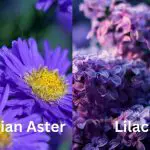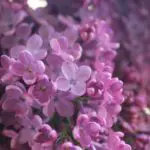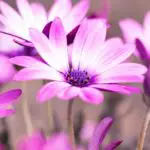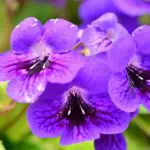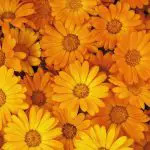Last Updated on February 15, 2023 by Derek
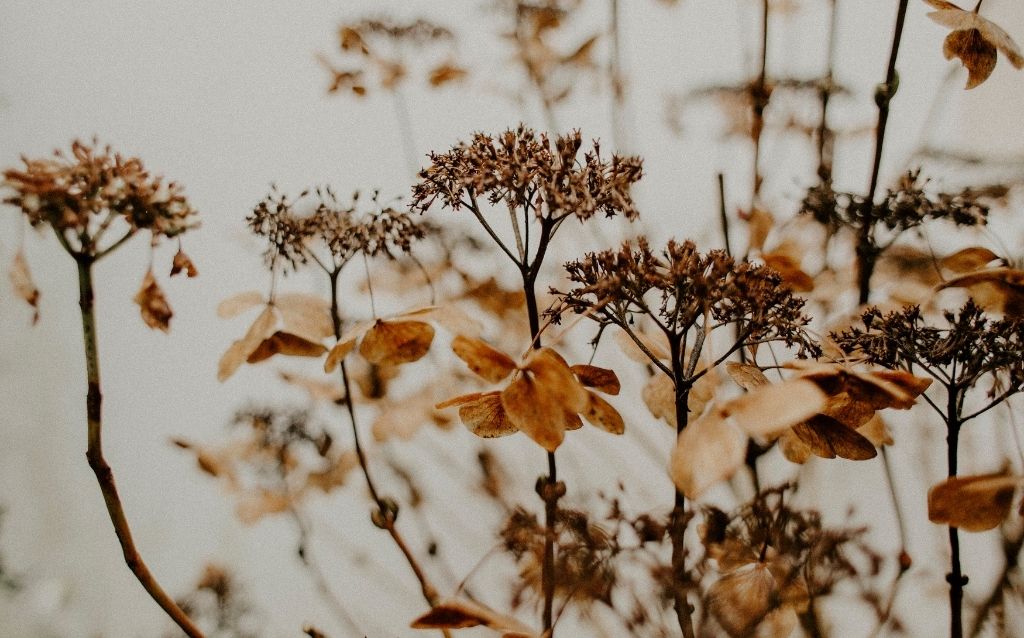
Are There Any Brown Flowers?
A good number of popular flowers like Rose and Hardy chrysanthemums come in different shades of brown. Some are naturally brown, while others range from tan to dark brown. These flowers invite a perfect balance and comfort, especially in a new home. They are an excellent representation of warmth and stability.
Table – various shades of brown flowers with botanical name and description
| Common name | Botanical name | Growing and blooming |
| Angel Amber Kiss Pansy | Viola cornuta | It is an herbaceous plant that tolerates almost all soil types and pH ranges as long as it is well-drained. It flourishes in full sun exposure to partial shade. It blossoms in early spring to late fall. |
| Oriental Poppy | Papaver orientale | Brown oriental poppy grows in any well-draining soil with neutral to acidic pH, and it requires full sun to bloom. It blossoms in late May and June. |
| Japanese Arisaema | Arisaema sikokianum | It is a perennial that thrives in well-drained acidic or neutral loam or sandy soil. It requires partial sun to blossom in late spring, summer, and fall. The bulbs are showy and attract birds. |
| Brown Flowering Tobacco | Nicotiana spp. | It is a showy perennial that flourishes in partial to full sun exposure. It blossoms throughout summer and fall. It grows best in moist well-drained alkaline, acidic, or neutral loam, clay, or chalk. |
| Tropical Hibiscus | Hibiscus rosa-Sinensis | Cattleya velutina grows best in well-drained soilless media like an orchid potting mix. It requires exposure to partial sun to blossom. Its bloom season is spring to summer. |
Is There a Brown Rose?
Charlie Brown Rose is a unique miniature rose small in size but with many petals, usually more than nine. It is a bicolor rose with peach and white tinges and light and pastel brown as its main shade. It symbolizes love, appreciation, and friendship. It is an excellent gift for a best friend, family member, colleague, or partner.
The two-inch flowers appear rather elegant because they are in shrubs. It blooms in spring, summer, and fall. Another important fact about this flower is that it has a sweet and intense fragrance.
Why Are Some Flowers Dark Reddish Brown?
Some flowers have a dark reddish-brown color to attract pollinators, primarily scavengers. An example is the corpse flower. The purpose of the dark burgundy color is to imitate rotting meat or dead animals to attract insects and houseflies. Apart from the color, this flower emits a stinky odor of rotting meat whose purpose is also to attract scavenging pollinators.
Video – brown flowers for home decoration
9 Types of Brown Plants
Brown flowers generally symbolize stability, nature, and warmth. Some of these blooms appear magnificent in their natural habitats, while others are perfect if you send them as gifts along with chocolates. Here are some examples.
1. Antler Orchid (Dendrobium discolor)
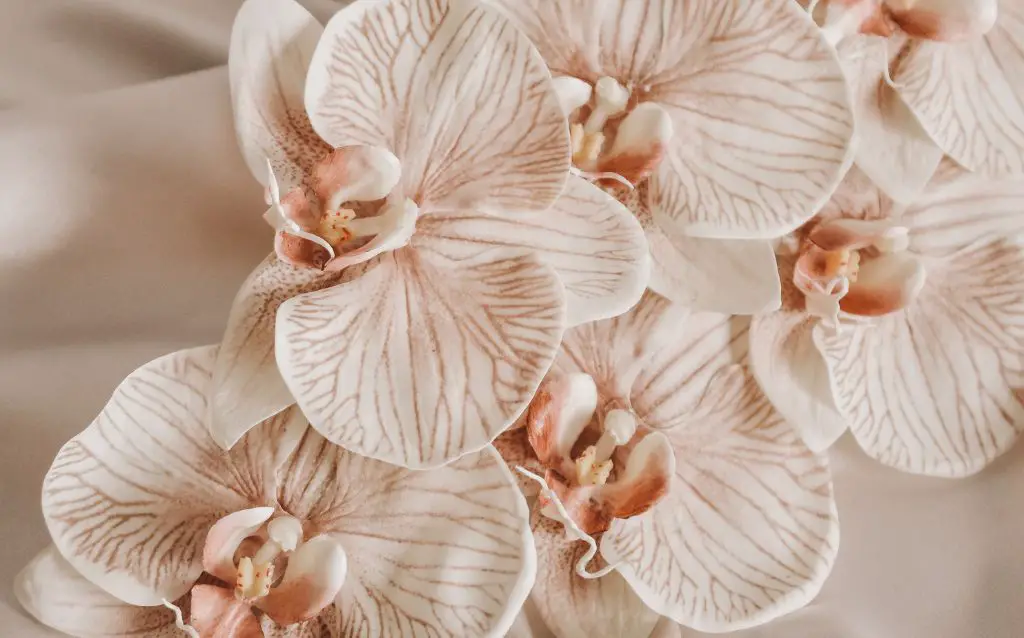
Originating in Queensland, Australia, the antler orchid is a flowering herb that attains a mature size of 0.4 feet to 4 feet in height and width. It has 10 to 35 leathery leaves and produces cylindrical flowers of various colors, including brown, white, pink, yellow, purple, and orange.
How do you take care of a Dendrobium orchid after flowering?
It grows best in the moist, well-drained, acidic, orchid growing mix and partial sun exposure. Ensure proper aeration so that the roots are not in a lot of moisture. It can blossom at any season, but spring has the maximum blossoming.
| Common Name | Botanical Name | Soil pH Range | Soil Type | Sunshine | Growing Zones |
|---|---|---|---|---|---|
| Antler Orchid | Dendrobium speciosum | 5.5 – 6.5 | Well-draining | Bright, indirect light | N/A (usually grown in a greenhouse or as a houseplant) |
2. Bearded Irises (Iris germanica)
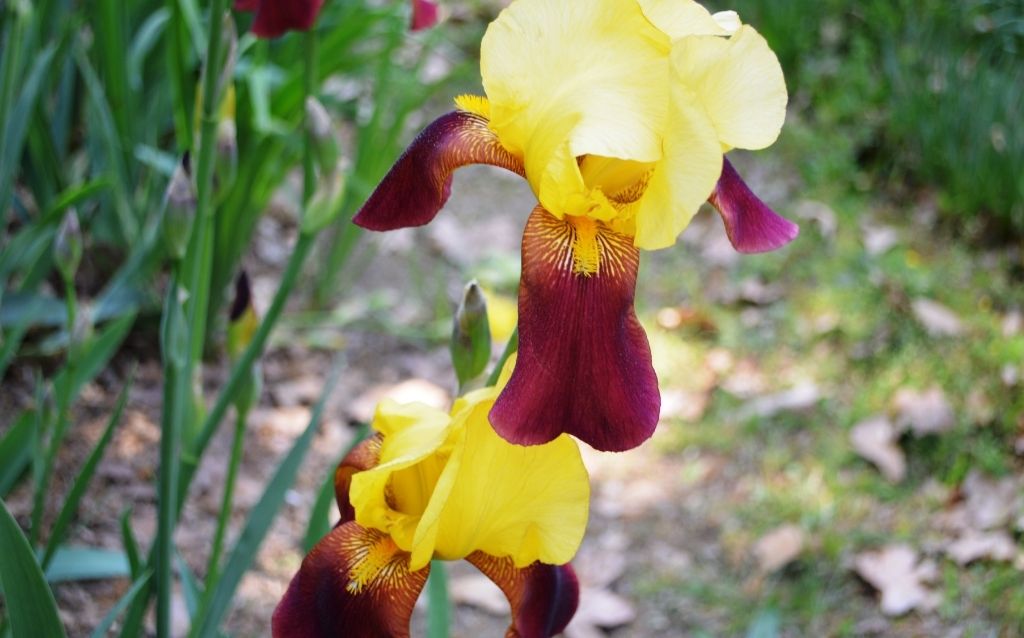
It is an average maintenance perennial that grows up to 60cm to 120cm tall and 30cm to 60cm wide. The center has a fuzzy line or beard that guides insects towards the pollen for pollination. It bears a flower with three upright petals and three dropping petals. The flowers appear in late spring, early and late summer.
| Common Name | Botanical Name | Soil pH Range | Soil Type | Sunshine | Growing Zones |
|---|---|---|---|---|---|
| Bearded Iris | Iris germanica | 6.0 – 7.0 | Well-draining | Full sun | 3-9 |
Where is the best place to plant bearded iris?
The Bearded Iris originates in the Mediterranean and grow best in moist, well-drained neutral or alkaline clay or loam soils and appreciate full sun exposure. It is deer and drought resistant, and the blooms are showy and fragrant.
Here are some fantastic facts about bearded irises.
- The flowers come in a wide array of colors.
- It is best to plant them from July through September.
- They fall into six categories classified according to their heights.
- Some species can re-bloom with fragrant blossoms.
- You can use them as beds and borders, containers and patio, or wall-side borders.
3. Brown Pansies (Junonia hedonia)
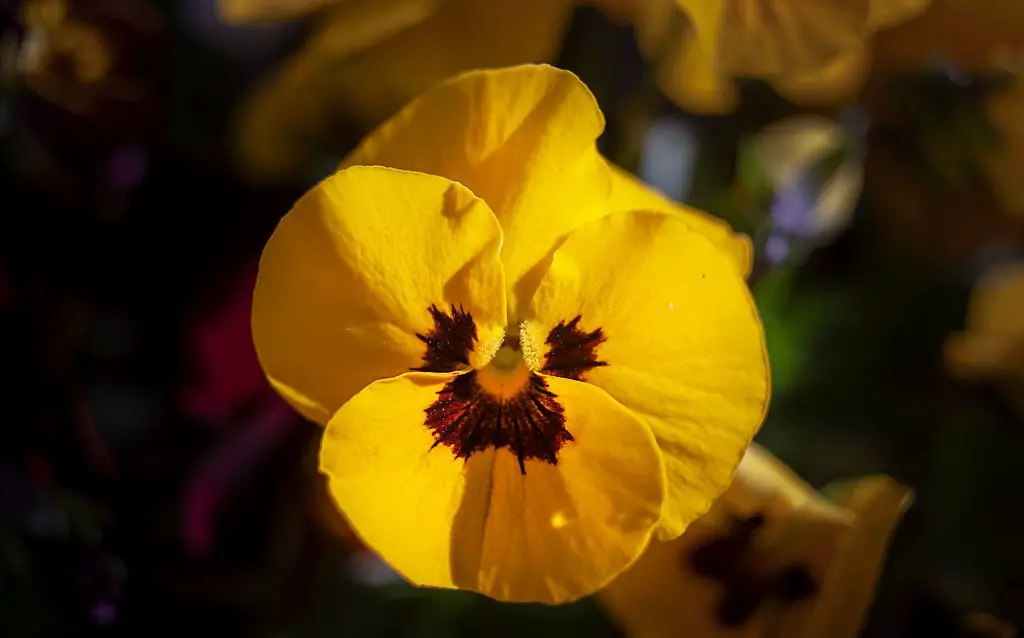
It is a fast-growing flowering plant with overlapping bright and bi-colored petals. The center is face-like, and the petals are heart-shaped. They are generally short-season perennials, but most people grow them as annuals. Their blooming time is spring and summer.
How to care for pansies outside
Here is a care guide for brown pansies.
| Common Name | Botanical Name | Soil pH Range | Soil Type | Sunshine | Growing Zones |
|---|---|---|---|---|---|
| Pansies | Viola x wittrockiana | 5.5 – 7.0 | Well-draining, moist | Partial shade to full sun | 2-11 |
- They thrive in loose, well-drained rich soil with a slightly acidic pH of 6.0 to 6.2
- Although they can tolerate full sun, they will blossom brighter in partial shade
- Apply adequate and balanced fertilizer following the guidelines on the label
- The too high temperature will lead to a decline in the flowers
4. Brown Tulips (Tulipa)
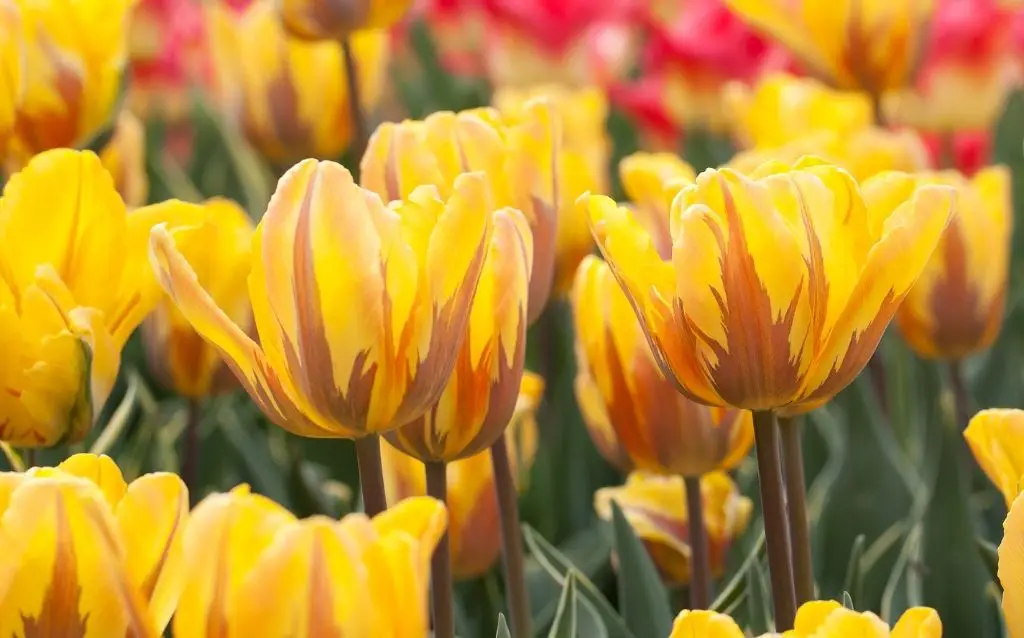
It is a perennial flowering bulb that grows best in a climate that experiences cool to cold winters and warm, dry summers. It can grow up to 9 to 24 inches tall and 6 to 9 inches wide, depending on the variety.
Since they sprout and blossom in early spring, they can survive beneath shrubs and trees that leaf out to provide shady conditions later in the season. Some species can be grown as annuals.
How do you care for potted tulips?
The following are major growing requirements for brown tulips.
| Common Name | Botanical Name | Soil pH Range | Soil Type | Sunshine | Growing Zones |
|---|---|---|---|---|---|
| Brown Tulips | Tulipa sp. (brown cultivar) | 6.0 – 7.0 | Well-draining | Full sun to partial shade | 3-8 |
- They thrive in rich, well-draining soil with a slightly acidic, neutral pH of 6.0 to 7.0. You can add compost to boost drainage.
- It flourishes in full sun exposure.
- Its favorite hardiness zone is 3-8 (USDA).
In cold climates, they blossom in April to May and in February to march in the warm climates.
5. Chocolate Cosmos (Cosmos atrosanguineus)

Native to Mexico, Chocolate cosmos is a perennial flower that is sometimes grown as an annual. With the right conditions, it blooms in summer with dark reddish-brown flowers.
Their primary characteristics are their chocolate-like fragrance and small size; usually one and a half inches across. They contain vanillin, an organic compound that also exists in cocoa and which produces the chocolaty smell. It grows up to 30 inches tall.
How do you grow chocolate cosmos?
Here are the growing requirements:
| Common Name | Botanical Name | Soil pH Range | Soil Type | Sunshine | Growing Zones |
|---|---|---|---|---|---|
| Chocolate Cosmos | Cosmos atrosanguineus | 6.0 – 7.5 | Well-draining | Full sun to partial shade | 7-10 |
- It grows in hardiness zone 7-11 (USDA).
- It thrives best in well-drained, rich soil with a slightly acidic pH. If you wish to plant them in containers, you need to mix topsoil with potting soil for best results.
- It requires full sunlight exposure; at least six hours a day.
- They appreciate moist soil and can tolerate humidity, but too much water will lead to the rotting of the roots. Be sure to plant after the danger of frost.
Read more about Chocolate Cosmos
Infographic – Top 5 Brown Flowers
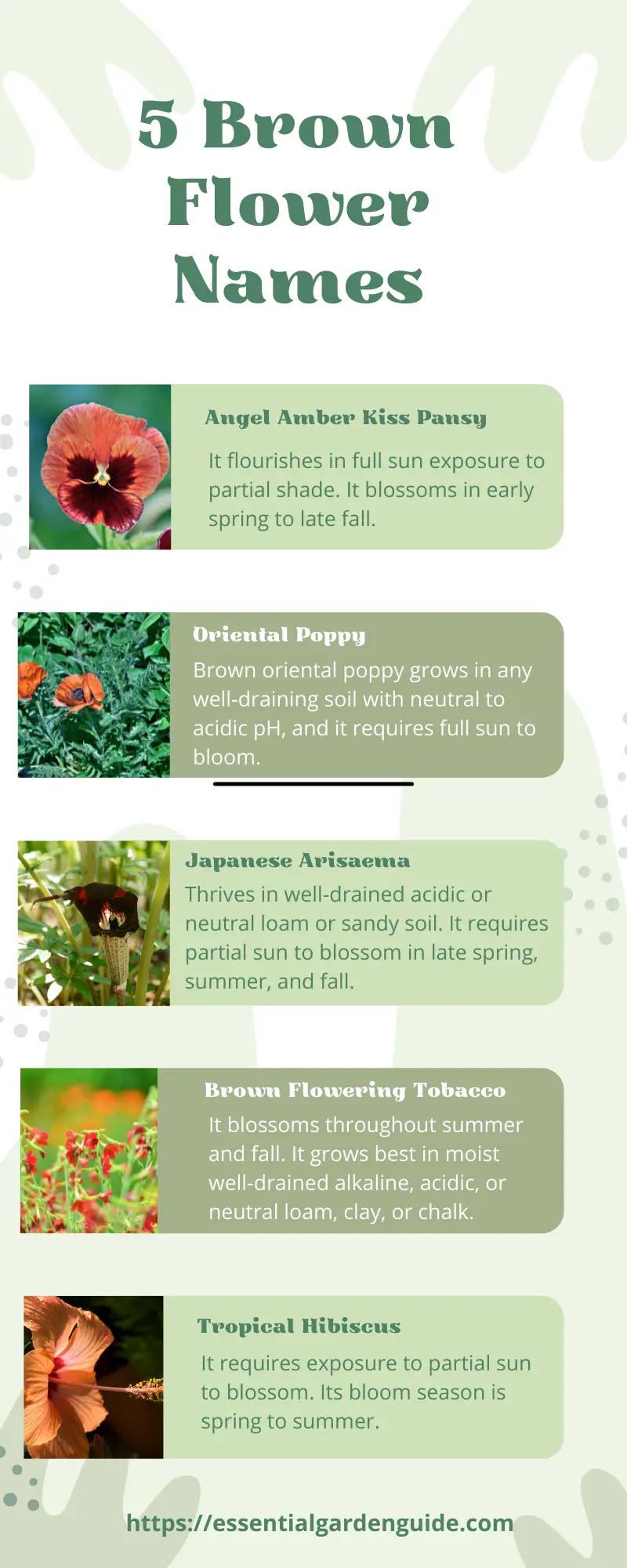
6. Chocolate Orchid (Dendrobium johannis)
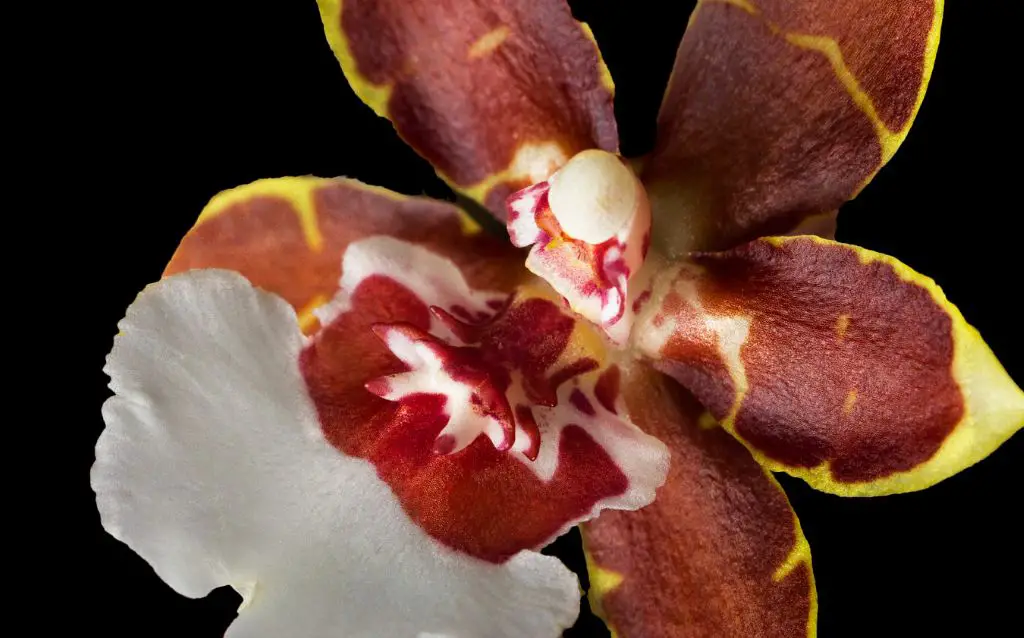
Chocolate orchids are also called the “sharry babies.” They are different varieties. They are tree-dwelling plants or epiphytes and bear showy blossoms with a sweet chocolate scent.
The leaves are long and leathery. It blooms twice a year, although multiple flowering will depend on the age and size of the plant. The following conditions will yield the best chocolate orchid blossoms.
Chocolate orchid care
| Common Name | Botanical Name | Soil pH Range | Soil Type | Sunshine | Growing Zones |
|---|---|---|---|---|---|
| Chocolate Orchids | Spathoglottis ‘Chocolate’ | 5.5 – 7.0 | Well-draining | Partial shade | 9-11 |
- Potting – it requires high humidity, which means you should plant on top of pebbles to ensure that water evaporates. It prefers well-draining potting; planting in baskets can improve drainage.
- Temperature – a chocolate orchid plantcan tolerate a wide range of temperatures but cannot withstand temperatures below 50 degrees Celsius.
- Light– requires full sun to partial shade. You have to protect the plant from the hot afternoon sun lest the leaves dry.
7. Graham Thomas Austin Rose (Rosa ‘Graham Thomas’)
It is a bushy deciduous shrub that blooms in summer and autumn. It has a thorny stem with pinnate leaves that further divide into toothed, ovate, glossy leaflets that are bright green. The plant reaches a mature size of 1.5 meters in height and width within two years of growth. Here are the growing and care requirements.
- It can tolerate various soil types as long as it is moist, well-drained, and has an acidic, alkaline, or neutral pH.
- It requires full sun exposure to bloom.
- For best results, avoid overhead watering and do not plant where roses have grown previously.
| Common Name | Botanical Name | Soil pH Range | Soil Type | Sunshine | Growing Zones |
|---|---|---|---|---|---|
| Graham Thomas Austin Rose | Rosa ‘Graham Thomas’ | 6.0 – 7.0 | Well-draining | Full sun | 5-9 |
8. Charlie Brown Orchid (Cymbidium)
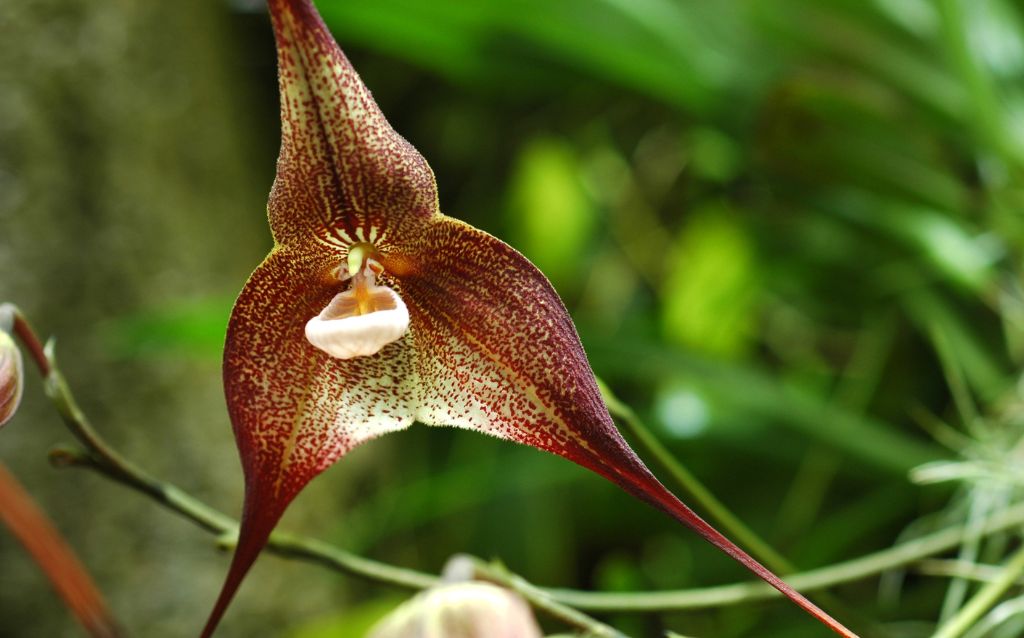
It is an evergreen orchid with autumn tints, traces of peach and yellow, and a deep crimson throat. It is a rare orchid variety that thrives best in cold conditions. Charlie brown orchid prefers an outdoor moist location with a bright shade between late spring and summer.
You can place them indoors next to a window and a humidifier the rest of the year. The potting medium must be well-drained. Please avoid repotting before the potting medium breaks down. It blooms from September to January.
| Common Name | Botanical Name | Soil pH Range | Soil Type | Sunshine | Growing Zones |
|---|---|---|---|---|---|
| Charlie Brown Orchid | Orchid species | N/A | Humus-rich, well-draining | Bright, indirect light | N/A |
9. Charlie Brown Rose (Rosa ‘Charlie Brown’)
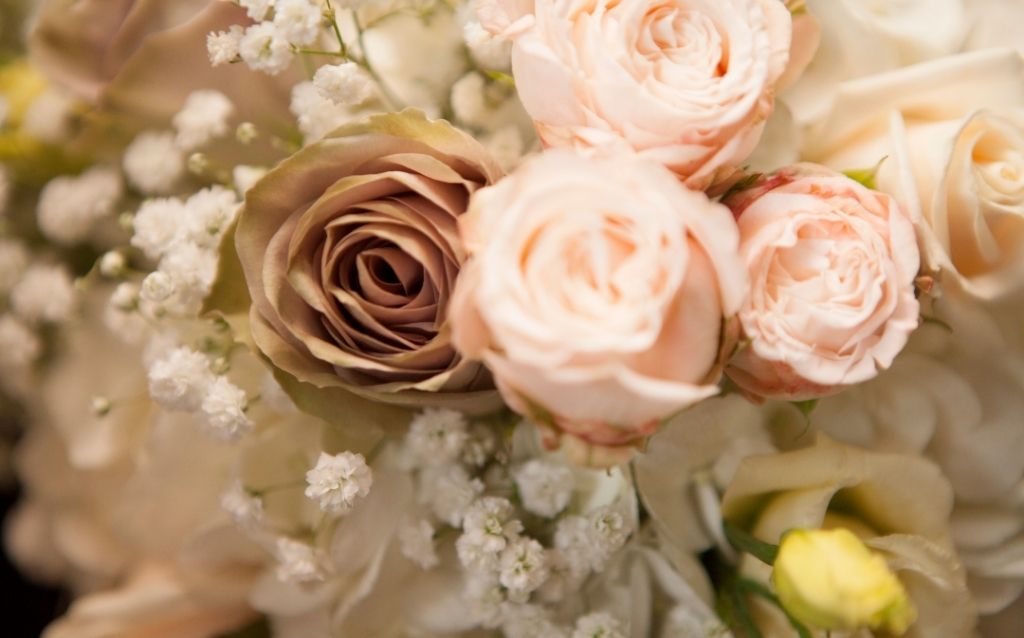
Charlie brown rose is a miniature rose that comes in various colors, including brown. It produces small flowers about 2 inches across with 9 to 15 petals each. It blooms throughout summer, but late-season blossoms are fewer.
They thrive in moist, well-drained, slightly acidic soil and full sun exposure. Please note that this variety of miniature roses cannot tolerate winter conditions.
| Common Name | Botanical Name | Soil pH Range | Soil Type | Sunshine | Growing Zones |
|---|---|---|---|---|---|
| Charlie Brown Rose | Rosa ‘Charlie Brown’ | 6.0 – 7.0 | Well-draining | Full sun | 5-9 |
FAQ for types of brown flowers:
What types of brown flowers are there?
Some common types of brown flowers include:
- Chocolate cosmos
- Brown-eyed Susan
- Maroon coneflower
- Brown sneezeweed
- Goldenrod
- Brown-throated sunflower
- Brown hyacinth bean
- Brown-flowered milkweed
Are brown flowers rare?
Brown flowers are not that rare particularly, but it is an unusual color for a plant they may not be quite as common as other colors.
Can brown flowers be used in bouquets or arrangements?
Yes, brown flowers look fantastic in bouquets or flower arrangements. They can make a multi-colored arrangement more interesting by adding a more passive color like chocolate. Even brown flowers of a different hue can make a stunning bouquet, and stand out from the crowd.
Are brown flowers associated with any particular meaning or symbolism?
Brown can symbolize stability, reliability, and dependability, but these meaning can be changed according to the type of flower we’re talking about. A brown rose can convey a very different meaning than brown pansies, for example. A rose implicates deep feelings, while pansies are light and signify passing thoughts.


